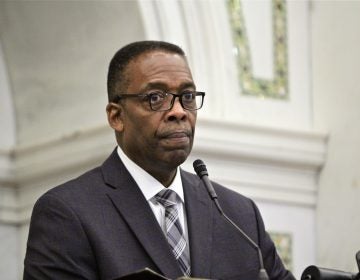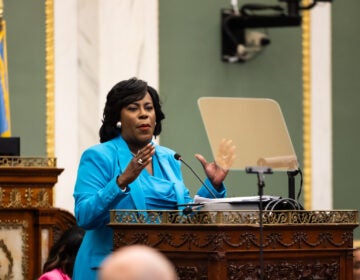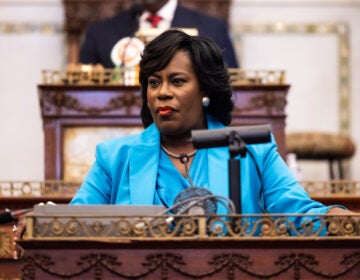Philadelphia Land Bank is finally selling its vacant lots. Now the question is who will benefit
Philadelphia Land Bank officials say a reformed system is producing better results yet critics see a process that advantages developers over residents.
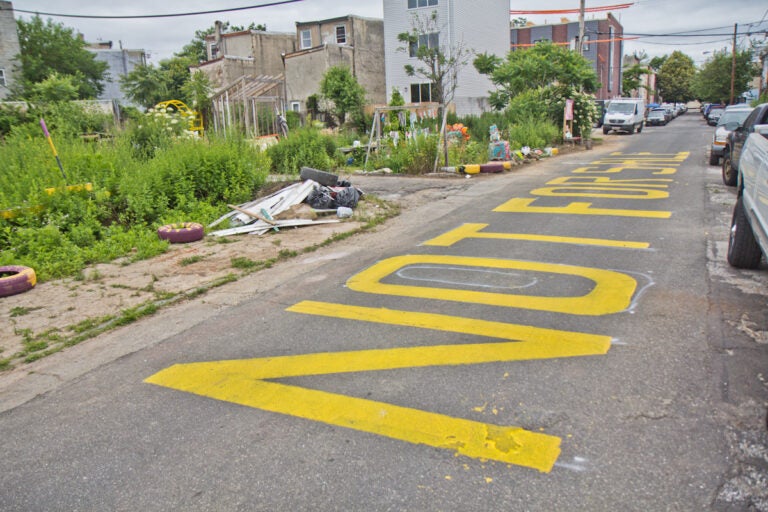
At the César Andreu Iglesias Community Garden in Kensington, the words “Not for sale” are painted on the street as a message to developers and the city. (Kimberly Paynter/WHYY)
More than a year after new legislation capped an intensive overhaul of Philadelphia’s long-troubled land sale process, officials are hailing reforms as a success, pointing to progress in turning vacant property into housing — and sales data indicates slow but steady movement on a problem that has left empty lots blighting neighborhoods for years.
The city has for decades struggled to manage and offload a catalog of about 6,000 vacant properties it accumulated as property owners abandoned lots or lost them over unpaid taxes or other liens. Land was split between different landholding agencies and firewalled behind an opaque and convoluted sale process. More recent revelations of political dealing, land flipping, and a colossal backlog of interested buyers culminated with officials effectively freezing sales in 2019 and legislating changes with reformist goals.
The 2019 overhaul was not the first time the city initiated a transformation of how it sells properties. But Angel Rodriguez, who, four years ago, took the helm of the city’s primary clearinghouse for public land, the Land Bank, said these latest changes have been more tangible than in the past. He said sales through the nonprofit entity, which is housed within a city-related Philadelphia Housing Development Corporation, are more transparent, more predictable, and subject to more oversight than before.
“On the whole, I think we’ve done a pretty good job,” he said. “We’re getting better.”
Yet while some developers and sources close to the agency shared this outlook, a report from the Philadelphia Coalition for Affordable Communities, a consortium of nonprofit groups, released this month raised questions about the Land Bank’s approach. It criticized the agency for both the slow pace of sales and not directing more vacant land toward land trusts, community gardening groups, or other public goods.
“City Council must pass legislation that prioritizes permanent affordability for community-sustaining uses, selected and implemented through community-controlled processes,” the report concludes.
New conflicts over a ‘forever transaction’
So, if the Land Bank reforms worked, why are so many people unhappy?
Overall, sales since the reforms went into effect ticked up slightly from years past, although the Land Bank still moves a relatively small number of lots each year compared to the city’s total portfolio. An analysis of city deed records showed that between January and October of last year, the Land Bank averaged seven transactions per month.
Some of the largest transactions last year were essentially land transfers to another government agency — the Philadelphia Housing Authority — for affordable housing projects. Yet the agency managed to sell some land for private projects that will also result in the affordable units needed to meet city goals and unrelenting demand. The Land Bank completed the sale of 19 lots in Grays Ferry to be redeveloped as “workforce housing,” with a price cap of $185,000, for example, and there are indications that hundreds of lots might be poised to move off the city’s ledger this year.
Rodriguez said this was something of an accomplishment given the impacts of the pandemic slowing office operations and real estate transactions. But for City Councilmember María Quiñones-Sánchez, who both helped create the Land Bank and authored reform legislation, the pace was still unacceptable.
“The Land Bank is still inefficient. It doesn’t have the capacity or willingness to process all the pending applications,” said the councilmember, whose 7th District in eastern North Philadelphia includes thousands of blighted lots.
But Rodriguez said that deeper, procedural reforms were working in ways that might not be obvious from sales figures. The city’s Vacant Property Review Committee, long assailed as a redundant and politicized check on sales, was eliminated. While ownership of land is still legally split between several government agencies, all agreed to adopt a uniform land disposition policy designed to route prospective buyers through the Land Bank. Whereas prior sales hinged more on the whims of councilmembers or city staffers, local government now assesses buyers using a scoring rubric to help guide sales by prioritizing “social impact.” The city’s goal is to respond within 120 days. Most importantly perhaps, city agencies now have more recourse against those looking to game sales.
Rodriguez said among the biggest improvements had been the tightening of screening processes for qualified buyers.
Previously, the city had amassed an enormous backlog of tens of thousands of “expressions of interest” for public land — but many of these were not serious proposals, with some submitting for hundreds of properties with little in the way of concrete development plans. In other instances, the city would see redevelopment pitched by groups that hadn’t put together a financing plan. Sometimes residents would submit applications for the city’s side yard program — allowing homeowners to annex vacant city lots next door to their homes — that didn’t meet even the most basic requirements.
“You’d be shocked at how many people applied for a side yard that didn’t live next to the piece of property they were asking for,” Rodriguez said. “Before, people would assume you just get in line and you get a piece of city property.”
Today, interested parties fill out more detailed questionnaires and submit planning documents on the front end. He said the city had also created more tools on the back end to combat the types of eyebrow-raising scenarios that led to calls for reform — say, a city judge buying a “side yard” and quickly flipping it to developers for profit.
“The land is permanently deed restricted. If you have a side yard, it stays a side yard …We also included a power of attorney that allows us to revert the property back to city ownership,” he said. “You also can’t purchase land if you owe back taxes, or a water bill, PECO bill. Or if you have outstanding code violations, or a judgment against you … All that really culls the group of people who think they should be able to get city-owned land.”
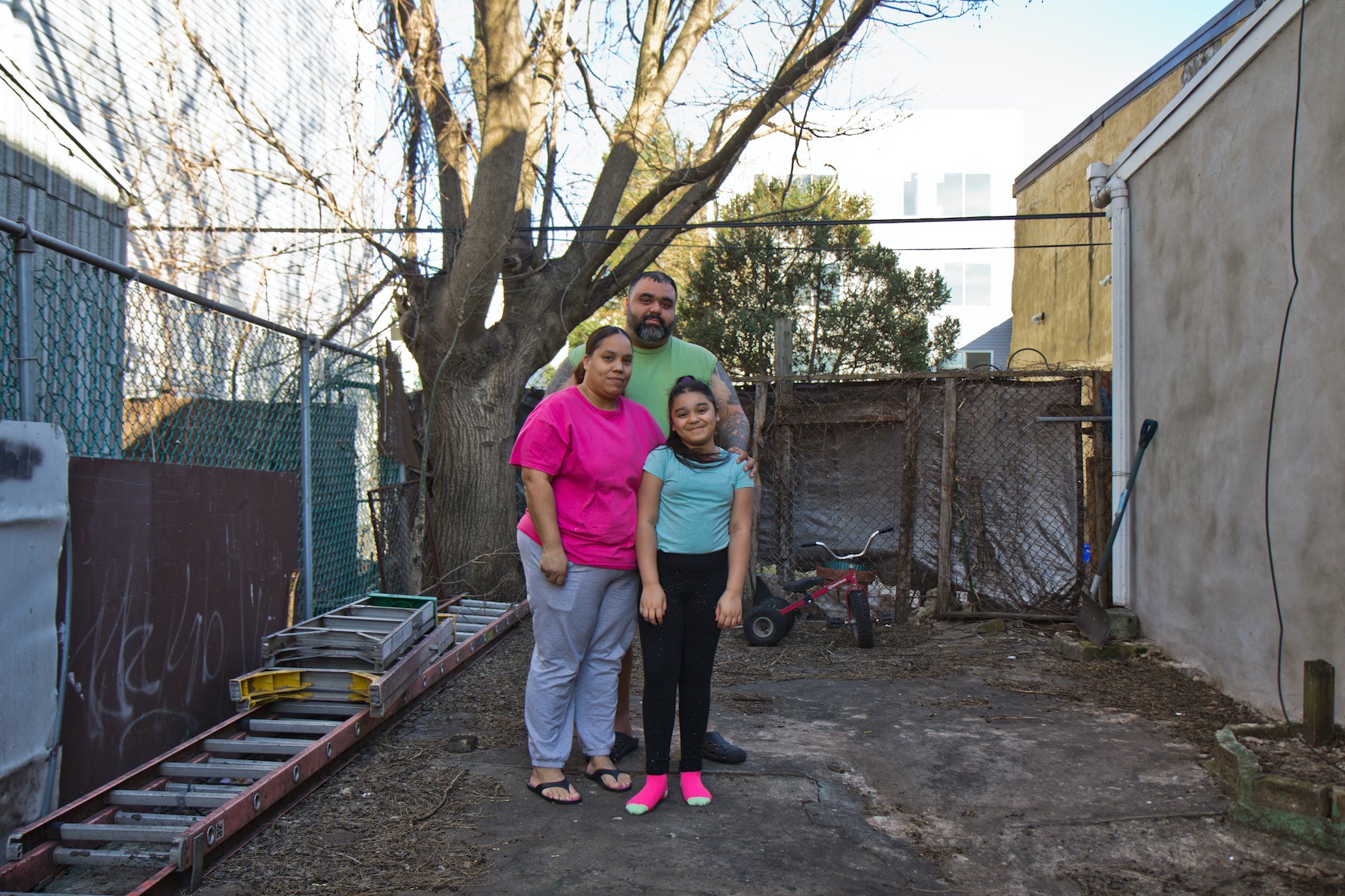
But some say these controls are too strict for ordinary people in search of side yards or garden space. Adamarie Baez said her family has been seeking to gain legal ownership over a city lot that has been used as a side yard for her family’s residence on Lawrence Street in Kensington for nearly 30 years.
“My husband’s mother always took care of the lot,” she said, recounting years of family barbecues on the small strip of land. “When she passed, it was given to my husband … Now we take care of it.”
While the lot is fenced and the Baez family has effective control over the lot, she said she is fearful the land would be purchased by a developer.
“It’s not even that much land and we’ve been dealing with it for so long. And I know that what they want it for is to build on it,” she said.
Three years ago, she said she was advised by the city to ask Quiñones-Sánchez, her local councilmember, about acquiring the lot. When that didn’t work, she attended a Land Bank meeting last March and filled out a formal application to obtain the lot through the side yard program.
Although she said the application process was fairly easy and that the city did respond and helped her clear up tax and water billing issues, they still don’t have any sense of when — if ever — they might get the land. Asked about the application, a spokesperson for the Land Bank said it had been previously flagged for not being up to date on taxes or utilities, but that if those issues were resolved it could move forward as soon as the end of this month.
But Baez said that was news to her.
“Not knowing is what’s really annoying. You just don’t know what else they want,” she said.
There are other roadblocks. City Council must still approve every sale, per state law, and the start to finish timeline for a city lot is paperwork intensive and much longer than conventional real estate sales. The pandemic blunted the number of properties the Land Bank could reasonably transact last year, and Rodriguez said his office needs more staff to handle the sometimes arduous qualification process.
“We are understaffed,” Rodriguez added. “We had significant staff turnover in the past year.”
He acknowledged there was room for improvement, saying that finally increasing sales volume was a priority this year. However, he said it was also important to note that the city was getting more out of the sales that it completed.
“We’re disposing of a city asset to somebody. If we give away a property as a side yard, it could have been a house, so why did we do that?” he said. “Most people think it should be like ordering from a fast food dollar menu. But it isn’t. It’s a serious process. It’s a forever transaction.”
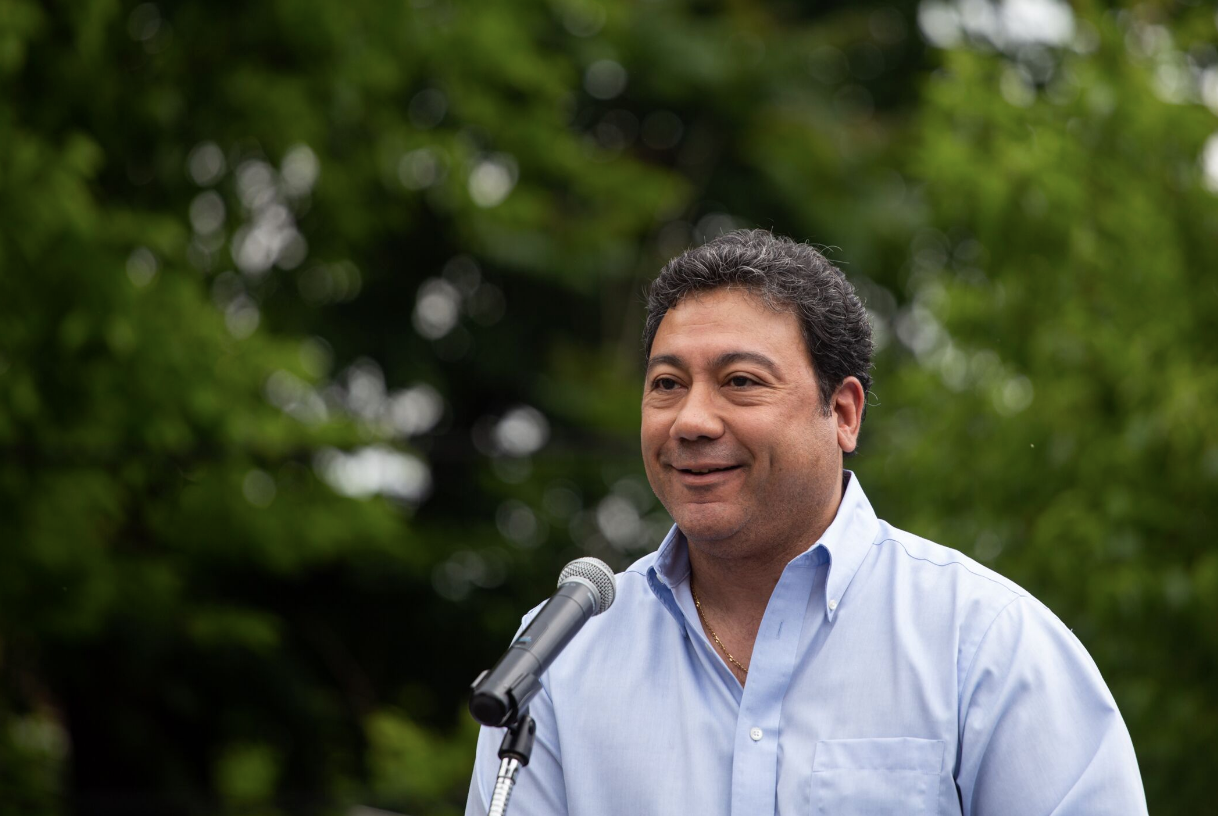
Surge of sales to developers on horizon
Ironically, a surge in public land sales may be coming, but perhaps not the kind envisioned by neighbors like Baez. Legislation that passed City Council on the heels of other reforms in 2019, allows private or nonprofit developers to trigger a “non-competitive” sale process by proposing a redevelopment plan that includes at least 51% affordable housing units, effectively jumping to the front of the line for sales.
Mo Rushdy, managing partner at real estate development firm The Riverwards Group and a member of the Building Industry Association said his company alone had already submitted applications for hundreds of vacant lots from the Land Bank using the affordable housing bonus and was on the cusp of finalizing the first such sales.
“I personally have applications for 400 or 500 units into the Land Bank, with that legislation,” he said.
As a buyer, Rushdy said he had noticed the impact of other reforms — particularly a “night-and-day” increase in response times to applications for city land — but few were as impactful as the affordable housing bonus.
“Before, it was waiting for [request for proposals] to be issued by the Land Bank and that could take a year. And then a bunch of other developers bid and that process could sometimes take years,” he said. “Now when we work for the city, it’s a 120-day process … and I don’t have to wait for the slowest person to respond.”
Rodriguez confirmed that the agency had received “500 to 700” such requests since the passage of the legislation, although it had not yet actually completed a non-competitive sale based on the new affordable housing provisions. Quiñones-Sánchez, who authored the affordability legislation, nevertheless said that it would send a bad message for the Land Bank to begin shifting so much land to developers while neighbors’ applications for side yards or gardens sat in limbo.
“This is why we get slammed. It needs to be about prioritizing long-term residents,” she said. “We want to entertain these public-private partnerships but we can’t do that and send a message that regular people have to fill out a 25-page form and wait.”
What Rushdy described as the biggest leap forward for private developers looking to tap public land is also at odds with a push for nonprofit developers and community groups that want more prioritization when it comes to the distribution of public land. Many of these concerns were articulated in the Philadelphia Coalition for Affordable Communities report earlier this month.
“[PCAC] calls on Philadelphia’s elected officials to adopt a progressive policy that will prioritize the disposition of public land for permanent affordability to community-controlled entities,” the report states. “We demand priority because public land is a limited resource, and public land should be used for public good.”
The report asserts that many “affordable” units being built as the result of Land Bank sales are held to income standards that are still too high for the poorest Philadelphians — estimating that just 7% of all units created through city land sales were affordable for households earning $25,000 per year.
In 2019, about 23.3% of city residents lived under the federal poverty line, earning below $12,490 a year. The Land Bank’s own annual report indicates that between 2018 and 2020, its land sales resulted in the creation of 221 units of housing, 55 of which were market rate. 111 units were earmarked for households earning 30 to 60% of Philadelphia’s area median household income, or roughly $15,000 to $29,000 a year. City Council’s legislation encouraging land sales for affordable housing allows these units to be priced for purchase for buyers earning up to 120% of area median income, or around $73,000 for an individual.
Rodriguez said the Land Bank was making progress on some of these fronts. He pointed to efforts to preserve the César Andreu Iglesias Community Garden, which sits on public land that was controversially slated to be redeveloped as a combination of market-rate and affordable housing units. A sale to involve community gardening groups would likely be scheduled for an upcoming board meeting. PHDC has also begun experimenting with structuring some sales as a land trust, allowing the city to maintain long-term public control over land through lease agreements.
Rodriguez said financing was part of the issue. For-profit developers often had easier or more reliable access to private capital, while nonprofits were often forced to seek out grants or government funding. He said the Land Bank was working with nonprofit groups on a program that would allow them to take over long-term leases on city land while they arranged financing for affordable housing developments.
“You need a subsidy. And subsidy takes time,” he said. “So, we’re allowing groups to take control while they do that.”
‘Why does it take years to get one little lot?’
Lauren Troop, who works with the César Andreu Iglesias Community Garden, said the group was pleased that the Land Bank board approved their efforts to win legal control of their land, but felt the experience illustrated an agency that seemed to prioritize developers over residents.
“That deal went through fast enough for no one in the neighborhood to know it was happening,” she said. “So why does it take years to get one little lot?”
Developers like Rushdy counter that they are helping generate sub-market rate units without a subsidy and relieving housing pressures. But to Troop, it was lamentable that the city relied so heavily on skimming public benefits off private investment. She felt this reliance had created a dynamic in which community gardens, affordable housing, and the need for the city to generate revenue were all seemingly pitted against one another.
“Their mission is to get land so it’s not all developed at market rate and to use some for community uses,” she said. “It’s like we’re in this stage of capitalism where these city government arms have to be privatized and make their own money. It’s like you might as well not even have them.”
Larger efforts to create more affordable housing or invest in major community projects are hampered by city investment –– or rather the lack thereof. Although a 1% construction tax and other programs aim to pull in millions more for housing and community development, the city slashed affordable housing funding last year in response to the pandemic. And this year it will likely face an even more dire financial crisis.
Rushdy acknowledged it was impractical to expect the private sector to ever build a large percentage of units that were affordable to residents living under the poverty line without entering a “red zone” from a financing perspective.
“That’s really pushing it,” he said. “That’s on the borderline of being financeable, with no subsidy.”
The latest debate over the purpose of the Land Bank is illustrative of what Rodriguez regards as the greatest challenge, post-reform: balancing the conflicting demands to sell land, create affordable housing, provide more community benefits — and to do it all faster and with relatively limited resources.
“The biggest obstacle that I see going forward is in the public’s thought process, about what the sale of land should look like,” he said.
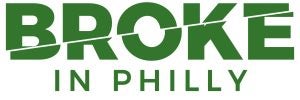 WHYY is one of over 20 news organizations producing Broke in Philly, a collaborative reporting project on solutions to poverty and the city’s push towards economic justice. Follow us at @BrokeInPhilly.
WHYY is one of over 20 news organizations producing Broke in Philly, a collaborative reporting project on solutions to poverty and the city’s push towards economic justice. Follow us at @BrokeInPhilly.

Subscribe to PlanPhilly
WHYY is your source for fact-based, in-depth journalism and information. As a nonprofit organization, we rely on financial support from readers like you. Please give today.



